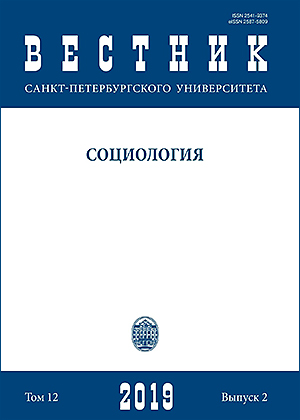Communication strategies of social bots: models of influence on the audience
DOI:
https://doi.org/10.21638/spbu12.2019.203Abstract
The article analyzes a phenomenon of social bots that is actively discussed in the literature. Researchers study the use of social bots in different areas and their growing power of manipulative influence. The authors have accomplished the following goals: 1) analyzed the most common approaches to the typology of botnets, 2) designed new approach to the typology of bots, associated with the peculiarities of their impact on the potential audience within a specific communication strategy, 3) developed parameters to describe different models of influence on the audience, 4) verified hypothesis using an example of a case study that analyzed two botnets in the “VKontakte” social network detected with the help of the author's technique. The results of the study. The authors identify the following parameters of the impact of bots on a potential audience: 1) the number of technological accounts in a botnet, 2) intensity of publication activities. These two parameters combined help identify extensive and intensive models of influence on a potential audience. In addition, they help find differences in the implementation of an attraction function. One botnet illustrates an extensive model of influence; the other shows an intensive model. The authors suggest that the choice of an impact model may depend on a botnet’s thematic focus and a type of a potential audience. In the future, to extend the examination of botnets’ communication strategies, the authors plan to add and analyze other parameters yet to be determined.
Keywords:
bots, botnets, typology of bots, methods of detecting botnets, intensive and extensive models
Downloads
References
References
Downloads
Published
How to Cite
Issue
Section
License
Articles of "Vestnik of Saint Petersburg University. Sociology" are open access distributed under the terms of the License Agreement with Saint Petersburg State University, which permits to the authors unrestricted distribution and self-archiving free of charge.




